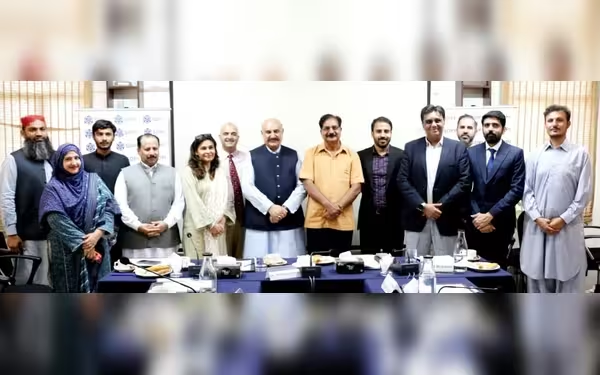Sunday, July 7, 2024 12:26 PM
SDPI Leads Discussion on Protecting Youth from Tobacco Industry Influence
- Over 37 million adolescents globally are tobacco users
- Dr. Amina Khan stresses dire consequences of tobacco use
- Dr. Minhaj us Siraj highlights exploitation of children in tobacco industry
 Image Credits: Associated Press of Pakistan
Image Credits: Associated Press of PakistanSDPI's stakeholder discussion addresses urgent need to protect youth from tobacco industry's harmful influences, emphasizing policy development and awareness campaigns.
The Sustainable Development Policy Institute (SDPI) recently hosted a stakeholder discussion on the pressing issue of safeguarding children from the harmful influences of the tobacco industry. This event coincided with World Tobacco Day, drawing attention to the alarming statistics surrounding youth tobacco use. In Pakistan alone, more than 1200 young individuals take up smoking every day, highlighting the urgent need for intervention to protect our future generations.
Global data from 2022 revealed that over 37 million adolescents between the ages of 13 and 15 are tobacco users, with a significant portion located in the WHO European Region. The rise in popularity of electronic cigarettes and nicotine pouches among youth is a concerning trend that demands immediate action.
The tobacco industry strategically targets young individuals to sustain their customer base, resorting to enticing products and advertising tactics aimed at children and adolescents. In Pakistan, the infiltration of electronic tobacco and nicotine products in educational institutions poses a serious threat. Shockingly, statistics indicate that more than 1200 children in the country initiate tobacco use daily, with many starting at a very young age.
Dr. Amina Khan, Executive Director of The Initiative, emphasized the dire consequences of tobacco use, revealing that one out of three individuals who do not quit smoking ultimately succumb to its effects. The early onset of smoking, with two out of five adult smokers starting at just 10 years old, underscores the critical need for timely intervention. Dr. Khan stressed the importance of adapting policies to address evolving trends in the tobacco industry, particularly with the introduction of modern products like vapes and smokeless tobacco that may not be covered by existing regulations.
To protect our youth, Dr. Khan highlighted the essential steps of prioritizing enforcement, policy development, and awareness campaigns to tackle issues such as the sale of single cigarettes and aggressive marketing strategies. She also emphasized the involvement of young people in shaping policies to ensure that interventions are well-informed and effective in addressing the current challenges.
Dr. Minhaj us Siraj, CEO of Health Syndicate, shed light on the exploitation of children by the tobacco industry through child labor in tobacco fields, depriving them of educational opportunities. He also discussed the harmful effects of the 'green leaf disease' associated with tobacco farming. Stressing the need for support from civil society, Dr. Siraj emphasized the collective effort required to counter the tobacco industry's influence on youth.
Dr. Waseem Janjua, a Research Fellow at SDPI, exposed the deceptive advertising tactics employed by the tobacco industry to entice young individuals into smoking. Referring to a study from the US, he highlighted the substantial financial investments made by the industry to promote tobacco products, underscoring the magnitude of resources dedicated to misleading the public about the dangers of smoking.
The protection of children from the harmful effects of tobacco industry interference is a critical mission that requires immediate and concerted action. By prioritizing enforcement, policy development, and awareness campaigns, we can safeguard our youth from falling prey to the manipulative tactics of the tobacco industry. It is imperative that we work together as a society to create a healthier and tobacco-free environment for our children's future.













